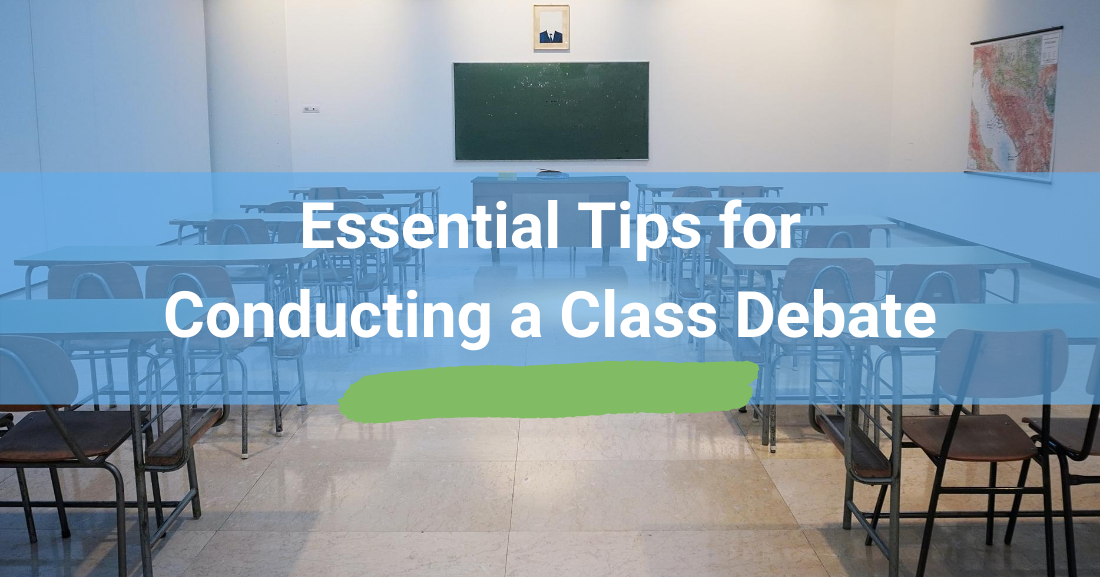Your students have better things to debate than whether Ariana Grande is a better singer than Rhianna. By introducing structured, formal debate to your ESL classroom, your students will benefit with listening, speaking and critical thinking skills.

They might learn a thing or two about the issue as well. Here are some simple tips to making it happen.
How to Conduct a Class Debate
-
1
Introduce the topic
All ESL debates start with a topic, or resolution. Often, this resolution is a proposed course of action that one team will argue for and another will argue against. Choose a topic to which your students can relate and perhaps one with practical application. You can make the topic less serious (the cafeteria should include more international dishes on the daily menu) or more serious (the U.S. government should reform its visa application process). In any case, be sure that your students understand the issue and any specialized vocabulary that goes with it.
-
2
Assign the Affirmative and the Negative
There are two sides to any debate. Naturally, one will argue for and another against the resolution. With ESL students, it is best to group your students into teams to research and argue the issue rather than expecting one student to do all the work. This way one student does not have all the pressure to perform, and the other members of the group can help with comprehension and strategy. Ideally, break your class into four groups (you will want at least three students in each group) and assign two groups to each of two resolutions. Then assign one of each pari of student groups to the affirmative. This group will argue for the issues presented. The other two groups will be the negative, and will argue against the resolutions. During the debate, the other groups will serve as the judges and decide which side presented a stronger case voting at its conclusion for winners of the debate.
-
3
Give Time for Research
Your students will need time to research the issue. Not only that, they will also need additional instruction on the specific vocabulary that may be involved. Make sure all of your students understand any specialized vocabulary so the success of their arguments does not depend on simple comprehension. Encourage each group to form a strategy to decide who will do most of the talking during the debate though remind them that all of them are expected to participate in the research and strategy of the debate. Then, during the preparation time in anticipation of the rebuttal, your students should discuss with their teams the points the opposition made and decide how to refute them.
-
4
Keep Track of Time
If you are unfamiliar with formal debate, the speakers follow a set order. The following is the most basic of debate structure:- First, the affirmative group receives two minutes to present their case to the audience.
- The negative group then receives two minutes to present their case.
- After both sides have a chance to speak, both teams receive two minutes to prepare a rebuttal and summary.
- The order of speech is reversed now and the negative side presents their rebuttal and summary for the first two minutes.
- The last to speak is the affirmative team who then presents their rebuttal and summary for two minutes. The debate is now concluded.
There are other structures that you can follow for debate, and they may be useful once your class is familiar with the process and strategy of debate, but if this is the first time your students are formally debating, keeping things simple is best.

-
5
Make a Judgment
Usually in debate, the winner is the one who has presented the strongest case. For ESL classes, the overall purpose of speaking is more important than the specific outcome of the debate. Still, your students will probably want to know who won. To determine the winner, have the audience vote on which team they thought made the most convincing argument. With this, weigh your own opinion as to who communicated clearly and refuted the opponent’s arguments best. This combination will identify your winners.
Your grading process, on the other hand, does not have to name a winner and a loser. As long as your students were able to communicate clearly, use good grammar, and have good pronunciation, the debate was a success, and their grades should reflect that success.
Although debates are often formal and structured, don't let them intimidate you. Controversial issues are always a great resource for ESL students’ speaking practice, and discussing the issues in a formal manner is just as valuable as informal class discussions.
Debates are Instructional
Debates Can be Fun
Make a game using a debate. Write various topics on cards with subjects that will appeal to the interests of students and suitable for their ages. An example for young learners: Cats make better pets than dogs. You can also download topics here if you're pinched for time. Let them randomly choose a card and pair with a classmate. They can each give their opinion about the subject on the card they have chosen. The activity can be used as a time filler too.
The next time your curriculum brings up a controversial issue, why not use it as an occasion to give your students a new and structured experience of spoken English!
P.S. If you enjoyed this article, please help spread it by clicking one of those sharing buttons below. And if you are interested in more, you should follow our Facebook page where we share more about creative, non-boring ways to teach English.







